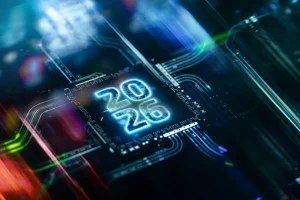AI’s Emerging Risks: Urgent Calls for Action

The urgency to address the potential dangers of artificial intelligence (AI) is becoming increasingly pressing. Recent scholarly work highlights a significant lack of proactive measures to counter these risks, despite stark warnings from the global scientific community.
In response to growing concerns, governments around the world have begun to initiate discussions and draft guidelines aimed at mitigating these threats. However, these efforts seem to be lagging, failing to match the pace at which AI technology is advancing.
The Urgency of AI Risk Management
As the pace of AI development accelerates, so too does the urgency to address its potential dangers. A recent paper highlights a lag in proactive measures to mitigate risks, despite clear warnings from the global scientific community. The publication, involving 25 top-tier experts, underscores the need for immediate action to catch up with technological advancements.
Government Response and Policy Initiatives
Governments worldwide have begun to recognize the threats posed by AI, taking steps towards cultivating safer AI practices through guidelines and discussions. However, these efforts are often criticized as insufficient in comparison to the scale and immediacy of the risks involved.
The existing policies do not yet match the high stakes, leaving a gap in our preparedness against AI-induced threats. This regulatory shortfall necessitates a global push for comprehensive strategies and robust safety mechanisms.
Potential Catastrophes and Calls for Action
The dangers of unchecked AI are profound, ranging from digital manipulation to autonomous warfare, which could result in unprecedented global crises.
Experts have illustrated scenarios where AI’s influence could lead to wide-scale cyber-attacks or even the existential threat of humanity’s extinction. Such dire predictions are driving urgent calls for a strategic rethink on AI governance.
Without decisive action, the world may face irreversible consequences, emphasizing the critical need for escalated efforts in AI safety research and control.
Technological Advancement vs. Safety Preparedness
While AI technology offers boundless possibilities, its rapid progress exposes gaps in safety measures that are struggling to keep pace.
This disparity between technological advancement and safety readiness presents a dual-edged sword, highlighting the importance of prioritizing risk mitigation alongside developmental ambitions.
Public Perception and Expert Opinions
Public sentiment on AI varies, with some viewing it as a boon for future advancements, while others express deep-seated concerns about its potential misuse.
Experts continue to debate the timeline and likelihood of AI reaching capabilities that could outsmart human oversight, adding layers of complexity to the ongoing discussions.
This divergence in views underscores the importance of an informed public discourse to navigate the ethical and practical implications of AI.
The Road Ahead: Preparing for AI’s Future
The global community stands at a crossroads, tasked with steering the future of AI towards beneficial outcomes while averting potential disasters.
Critical to this effort is the establishment of international coalitions and multidisciplinary teams dedicated to advancing AI safety protocols and ensuring that technological progress does not outpace our ability to control it.
As the global community grapples with the rapid advancement of artificial intelligence, the need for heightened vigilance and proactive measures becomes ever more critical. Without a unified and robust approach to AI safety, the potential for catastrophic outcomes remains a stark reality. It is imperative that international collaborations and stringent safety protocols keep pace with technological progress to safeguard the future against the unforeseen dangers of AI.
In conclusion, addressing the dangers of AI cannot be delayed. The potential for AI to influence global security and individual lives negatively is significant and demands immediate action. The concerted efforts of governments, experts, and the public are essential to forge a path that harnesses the benefits of AI while mitigating its risks.





